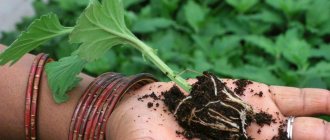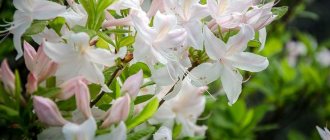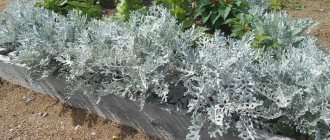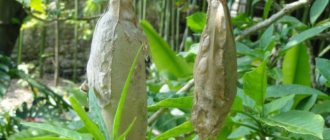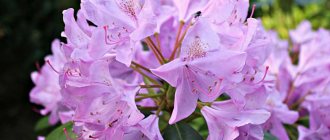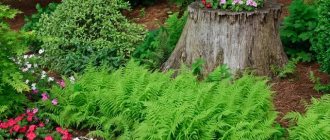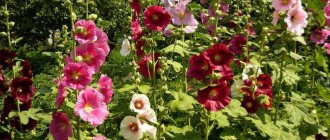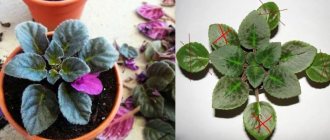Weigela is considered an unpretentious shrub, and therefore many owners plant it in their gardens and summer cottages. Indeed, this plant blooms even without proper care, but in this case there will be few inflorescences.
We'll tell you how to care for weigela after flowering and what you need to do. We will pay special attention to pruning methods, which should be done immediately after flowering ends.
Caring for weigela in open ground
Weigela does not require special care. But in order for the plant to be decorative and bloom profusely, it should not be left completely unattended.
Planting weigela in the ground
Select a location to plant the plant and dig a 40x40 hole for rich, well-drained soils and a 60x60 hole for poor or too dense soil. Try not to mix the top, fertile layer of soil, approximately a spade bayonet deep, with the rest of the soil - we use it for planting.
If you are planting an adult weigela purchased in a container, make the planting hole 10-15 cm deeper than the height of the pot. Place drainage at the bottom - gravel or broken red brick, cover with sand. Mix the fertile soil well with compost and nitroamophoska; if the soil was very dense, add peat.
Remove the plant from the container and place it in the planting hole. If the plant was bare root, make a mound and carefully straighten the roots. Fill the planting hole with soil so that the root collar remains at soil level; you can only deepen it 1-2 cm. Gently press down the soil and water the planting generously. When the water is completely absorbed, add soil and mulch the tree trunk circle with peat or well-rotted horse or cow manure.
The distance between weigeloi and other plants should be from 1 to 2 meters, depending on the expected size of the bush.
Top dressing
In early spring, when the snow has just melted, feed the weigela with any nitrogen fertilizer. Nitrogen is a building material for all parts of the plant; it stimulates vegetation. Then twice, the first time during the formation of buds, and then at the end of flowering, feed the plant with a special fertilizer for flowering shrubs - it contains little nitrogen, a lot of phosphorus and potassium, and contains microelements. At the end of August - beginning of September, feed the plant with phosphorus-potassium fertilizer, for example, potassium monophosphate - it will help young shoots to ripen well and increase the winter hardiness of weigela.
If you are a careful gardener or have a qualified gardener working for you, make sure that the weigela receives foliar feeding once every two weeks.
Trimming
In the spring, sanitary pruning of the bush is carried out - all dry and broken branches are cut off. Formative pruning is carried out in mid-summer, try not to miss this time - the appearance of the shrub depends on it. Trim branches that have stopped blooming as needed to encourage re-blooming.
Once every 3 years, you need to carry out anti-aging pruning - in early spring, cut off all the old branches that thicken the bush at the root, shorten the rest by 1/3.
Watering
In the spring and during the flowering period, water the plant generously; mulching the soil around the bush helps retain moisture. After flowering, reduce watering, and do not forget that weigela does not like stagnant water at the roots.
Preparing for winter
The older the weigela bush, the more winter hardiness it has. In the southern regions, the plant overwinters without shelter. The further you move north, the more serious shelter the weigela needs for the winter.
After leaf fall is complete, the root of the bush is sprinkled with a mound of earth, about 20 cm high, like a rose. If your winters are harsh, tie the branches with twine, tilt them to the ground and cover them with burlap or agrofibre.
If the weigela is still frozen, do not worry, if the root remains alive (it is the branches that most often suffer from frost), the plant will recover fairly quickly.
Why doesn't weigela bloom?
There are usually several reasons for the lack of flowering:
- incorrectly selected place for planting (too dense shade and close groundwater);
- the age of the bush is too young - some varieties form flower buds only in the fifth year of life;
- parasite activity;
- lack of nutrients in the soil.
You may be interested in:
Tea rose: 13 popular varieties of the queen of the garden
Ixia - a cross between gladiolus and narcissus
Mimulus: 10 varieties to replace capricious orchids
Origin and appearance of the plant
Weigela is an upright ornamental bush that can reach 1.5 m in height. Representatives of some varieties are 3 m in height. The plant has elongated leaves with sharp ends, on which veins are visible. The edges of the leaves are smooth. Depending on the variety, the leaf color can be green or reddish.
Weigela - a lush flowering shrub
The large flowers of the bush are bell-shaped. Weigela has multi-colored inflorescences, but the most common are white, delicate bed shades of pink and red.
For your information! The plant is characterized by a change in the color of the corolla during its flowering period.
Descriptions of flowering shrubs
Weigela is a shrub that blooms twice in one season. Weigela begins to bloom for the first time in mid-May. Flowers usually grow on last year's shoots. A special feature of the shrub is that its buds bloom even before the leaves appear. The flower looks unusual and beautiful, with many bright large inflorescences on bare branches. The first flowering stops by mid-June.
The second flowering occurs from August to September. The next one is not as abundant as the first one; flowers appear only on the shoots of the current year.
Features of the shrub and its use in the landscape
Weigela is a fast-growing spreading shrub 0.6-3 m tall, with a dense crown, and during the flowering period it is abundantly covered with bright inflorescences:
- white;
- cream;
- pink;
- purple;
- crimson hue.
Weigela is a shrub that reaches 3 m in height
The flowers are bell-shaped, up to 5 cm long. In most varieties of weigela they are collected in inflorescences of 3-7 pieces, but single ones are also found. The leaves are elongated - up to 10 cm, pointed at the end. Some varieties of weigela have not only beautiful flowers, but also bright, variegated leaves, which makes them very impressive during the periods between flowerings.
The life expectancy of the bush is about 60 years.
In landscape design, weigela is used to decorate flower beds and park areas. This shrub looks great in group plantings and as a single plant; it is used to create a bright spot of color or vice versa, as a background plant. Depending on the variety, weigela is used:
- Tall varieties - as a hedge, planted at a certain distance from each other, and also to create a bright spot against the background of conifers and tall deciduous trees, or as a tapeworm.
- Low-growing compact varieties - for decorating alpine slides and mixborders.
The shrub can grow up to 60 years
Weigela looks harmonious in joint plantings with barberry, spirea, juniper, Japanese quince, dogwood, cypress, hydrangea, thuja, euonymus, and tall cereals.
Weigela care and cultivation
The plant is quite unpretentious and tolerates wintering well. Regularly carry out agrotechnical measures necessary for normal growth and flowering of the shrub.
How to grow weigela? Basic Rules:
- Do not over-water the soil. When planting, arrange a drainage layer of crushed stone in the hole. For weigela, a lack of moisture is less harmful than its excess. Water young plants more often during dry months.
- Loosen the soil to a depth of about 5 cm. This will prevent the formation of a dense crust, saturate the soil with oxygen and get rid of weeds.
- Apply mulch regularly around the bushes. A layer of sawdust or bark will retain moisture in the soil, decorate the area around the bush and prevent the growth of weeds.
- Don't forget about feeding weigela. In spring, be sure to fertilize the soil. During the formation of flower buds, feed the plant with the following composition: potassium sulfate and double superphosphate - 30 g of each. Apply potash fertilizers in the fall.
- Perform pruning on time. This operation is needed not only for the formation of a beautiful crown. During sanitary pruning, weak, disease-affected shoots are removed.
Winter-hardy varieties
Winter-hardy varieties include the following plants:
- Candida. Withstands temperatures down to -30 °C.
- Pink. Able to overwinter at temperatures below -30 °C.
- Alba. Withstands frost down to -25 °C.
- Tango. Overwinters at temperatures down to -25 °C.
- Victoria. A record holder among frost-resistant varieties, it can easily tolerate temperatures down to -35 °C.
Types and varieties of weigela
For gardeners in our latitudes, more or less winter-hardy weigela species and varieties are of greatest value. These include:
Early weigela, or pleasant weigela (Weigela praecox)
It grows naturally in the Far East. The early weigela bush reaches two meters in height, the leaves are pubescent, and the crown is spherical. The flowers, bright pink on the outside, are collected in inflorescences of 2-3 pieces on the side shoots of the current year. Sometimes the throat of the flowers is yellowish-white; in the buds the flowers have a purple tint. This species blooms from the end of May for 10-30 days. Of interest is Weigela variegata - a variegated variety of Weigela early, the green leaves of which are covered with yellow spots, becoming creamy in summer.
Weigela florida (Weigela florida)
A shrub up to three meters high, the shoots have two rows of hairs. The leaves are on short petioles, serrate, pubescent on top only along the central vein, and pubescent on all veins below. Inflorescences of 3-4 bright pink flowers open at the end of May and bloom for up to three weeks. The most popular forms:
- purple weigela, or red weigela (Weigela Purpurea) - a bush with a dense crown, reaching a height of one and a half meters, the leaves are red-brown, the flowers are deep pink with a yellow throat, blooms in June-July. The variety Nana Purpurea is an almost exact, but smaller copy of weigela purpurea;
- Alba is a dwarf form with white flowers that turn pink as they fade;
- Variegata is an elegant and most frost-resistant form with small leaves, bright pink flowers collected in racemes;
- pink weigela (Weigela florida Bunge) - a form with flowers of pink-carmine color on the outside and pale pink, almost white inside;
- weigela Victoria (Weigela florida Victoria) - a meter-long bush with red-brown foliage, flowers of a crimson hue.
Weigela hybrida
It has a spreading crown and blooms profusely. It reaches a height of one and a half meters. Fragrant tubular-funnel-shaped flowers, solitary or collected in loose inflorescences, bloom in white, pink, purple, lilac and red-violet depending on the variety. The most popular varieties are:
- Weigela Bristol Ruby is a variety bred in the USA in 1941. The height of the bush is from 2.5 to 3 m, the crown diameter is up to 3.5 m. The leaves are bright green. The flowers are pink with a ruby red edge, sometimes with an orange center. Weigela Bristol Ruby grows very quickly and blooms at the end of June;
- weigela Red Prince is a compact bush, also of American selection, one and a half meters high, the crown is spreading, the branches are drooping, the deep red flowers look contrasting against the background of bright green foliage.
Weigela middendorffiana
Bush 1-1.5 m high, ascending shoots, large flowers (3-4 cm), yellow with orange spots in the throat, solitary or collected in few-flowered inflorescences from 2 to 6 pieces each. Blooms twice per season.
In addition to these popular species, their varieties and varieties, weigela profusely flowering, pleasant weigela, early weigela, Japanese weigela, garden weigela, Maximovich weigela and Korean weigela are also grown in cultivation.
Loosestrife: cultivation in open ground and care Loosestrife: planting and care in open ground, propagation and cultivation
After this article they usually read
Add a comment
Possible problems
Occasionally, weigela does not bloom, although it seems to grow normally. Determining the cause is sometimes difficult even for experienced agronomists. In some cases, a transplant helps, eliminating the impact of one or another factor that is unpredictable in advance. To combat insect infestations, only modern, safe insecticides should be used. They are quite effective, and are not inferior to older drugs, which are characterized by high toxicity.
See below for information on planting and proper care of weigela.
Weigela propagation
Professional gardeners use 3 methods of crop propagation: layering, rooting cuttings and sowing seeds. To preserve the varietal properties of weigels (growth, color of leaves and flowers), they are propagated by layering or rooted cuttings. When planted with seeds, the outside of the bush sometimes differs from its parents.
Rooting by layering
One of the most basic and high-quality methods for propagating weigela. Layers are rooted in early spring before the leaves bloom. Basic steps:
- Select a strong branch that is quite close to the ground. If a choice is required between a weak or strong process, then preference should be given to the 2nd option;
- Slightly loosen the soil under the branch, to a depth of no more than 1–2 cm. Pour a hill of fertile, loose layer of soil;
- In the lower part of the shoot, which touches the ground, the bark is weakly scraped. New roots will soon begin to appear at the cutting site;
- The branch is bent to the soil level and reinforced with iron wire or a pin. Sprinkle the branch with fertile soil;
- Thoroughly moisten the soil using irrigation. In order to conserve moisture in the ground, cover with film. A couple of times a season, the future seedling is doused and ventilated. For winter, the film cover is removed;
- After a year, the rooted cuttings are planted in a stable place. To do this, cut off a branch from the bush, dig up young plantings and carry out a pick.
Cuttings
To propagate weigela in the summer (May-June), young semi-lignified shoots are used. The green tops of the shoots are not used, but only the lower part of the shoot is cut off. For spring rooting (March), cuttings are selected from last year's good woody shoots.
Technology for rooting weigela cuttings:
- The shoot is divided into cuttings 10 cm long. When consuming young shoots, be sure to save the top 2 leaves. Other leaves are cut off;
- For the best rooting, the cut area is dusted with “root” powder. This product promotes rapid root formation;
- A container with drainage holes is filled with special soil. One of the best ways is a mixture of peat and sand in a 1:1 ratio;
- At a distance of 10 cm from each other, make a hole in the ground. Dip the cutting 2/3 of the way into the hole and compact the soil a little. The earth is moistened with warm water;
- Boxes with cuttings are placed in a non-sunny, warm place. During summer implementation, it is recommended to take the container with cuttings into a greenhouse and cover it with agrofibre. Plantings are certainly weathered.
Sowing weigela seeds
When copying from seeds, the varietal properties of an ornamental shrub are very rarely preserved. Sometimes the color of the flowers, the type of bush, or the tone of the leaves changes. But still, you should try this method of propagating shrubs.
You can try to collect seeds with your own hands from adult bushes or buy them in a store. This is done using the following method:
- Seed collection begins in September. Cover the seed box with a fabric bag so that during formation the seeds do not fall asleep;
- At the end of October - beginning of November, a box with seeds is cut and dried on a newspaper. Seeds are stored in cardboard bags for no more than 2 years.
The accumulated seeds are sown in the garden before winter, the following year in the spring, or in special containers. Seed planting technology:
- In early spring, they dig up the bed with a spade. The earth is enriched with organic matter. Humus or compost is added for fertility purposes. If the soil is clayey, then you need to add a little sand;
- The bed is fenced off with sides on all sides. The selection of space should be taken seriously. In one place, plantings take at least 3 years to mature. Arches are placed on the bed and covered with agrofibre, which will protect the seedlings from the sun and wind;
- Seeds are sown in the 2nd half of May. Weigela seeds are laid out on a flat surface. Sprinkle with a not very large layer of peat or coconut substrate. The soil is moistened with a spray bottle. Cover the bed with agrofibre;
- Before germination, moisten the bed every day. The first plants appear after 3 weeks.
Weigela after flowering
How and when to collect seeds
Weigela seeds ripen in September, and they need to be collected in November, when the boxes begin to crack. To prevent the contents of the boxes from spilling into the soil, wrap several seeds in gauze in September and secure it on a branch, and in November, cut off the box along with the gauze, bring it indoors, carefully remove the gauze, shake out the seeds on a newspaper, dry them, pour them into a paper bag, write on it the name of the plant, variety, planting date and store it in a dry, dark place until spring. Remember that weigela seeds lose germination after a year or two, and plants grown from seeds rarely retain the varietal characteristics of their parents.
Wintering weigela
When all the leaves fall from the weigela, and this will happen at the end of October or early November, sprinkle the weigela circle with earth, forming a hill 15-20 cm high. It is better to bend the weigela branches to the ground and press them to it, as is done with hydrangea, and Cover the top with roofing felt or spunbond, securing the coating so that it does not blow off the wind. You can not bend the branches to the ground, but tie the branches tightly with rope or twine, fence the bush with a frame made of metal or plastic mesh, pour dry leaves inside this structure for warmth, and wrap this structure on top with a thick covering material.
Plant care rules
In the warm season, caring for weigela is not difficult:
- The plant needs to be watered during periods of drought; at least 10-15 liters of water are added to each bush;
- periodically fertilize the soil with mineral and organic fertilizers (nitrogen, potassium and phosphate fertilizers at different periods of the growing season);
- shoots are also treated against parasites, infections and fungal pathogens.
Shrubs prefer to grow in conditions with a large amount of oxygen, so the soil must be loosened. The procedure is carried out while watering the plant or applying fertilizers.
It is important to ensure that the rhizome is not damaged
Wintering the plant
There are two main ways to cover weigela for the winter:
- in late autumn, add sawdust or soil under the bush, tilt the branches and wrap them with special material (Spunbond), tying the branches with rope;
- build a shelter from a metal or wooden frame and insulating material on the walls and roof.
The first option is used to cover varieties with an average degree of winter hardiness, as well as in temperate climates where severe frosts do not occur. Cold air will still penetrate, but non-woven materials retain heat well and protect the plant. Constructing a greenhouse from available materials is a more reliable method; it is recommended when caring for weigela varieties that are more sensitive to cold.
Sheltering weigela for the winter in the Moscow region and other regions with cold climates is a must. However, even if some shoots are frozen, the plant has a high ability to regenerate. When the temperature rises in the spring and the growing season activates, it is worthwhile to arrange abundant watering of the bush and add fertilizers to the soil so that it regains its strength after the winter.
Crown trimming
When growing weigela, it is recommended to trim the crown annually. This allows you to rid the bush of damaged shoots, create a beautiful shape and give new branches the opportunity to grow and develop. Depending on the purpose of pruning, there are two types:
- sanitary - carried out in the spring to get rid of those branches that have deteriorated due to the cold;
- formative - pruning weigela in the fall in order to give the crown the correct shape.
It is recommended to carry out both types of pruning. In spring, damaged and old shoots are removed so that new branches can grow faster. However, autumn pruning is more important for the plant - after it, the bush has time to recover well and tolerates cold better. There are several rules for trimming weigela in the fall:
- the procedure is carried out immediately after the end of the autumn flowering of the bush;
- cut off all damaged shoots 5 mm above the outermost healthy bud;
- for rejuvenation, it is recommended to cut off at least a third of the secondary shoots;
- remove branches that grow inside the bush.
Weigela is a bright ornamental shrub. It looks impressive when decorating a garden, adjacent areas, parks and recreation areas. However, not all varieties are equally resistant to frost and tolerate winter well. In conditions of significant differences in air temperature, even artificially bred frost-resistant varieties need protection from the cold. Preparing weigela for winter means covering it under a canopy or using available materials. During the rest of the year, the plant is easy to care for and pleases with flowering twice a season.
Trimming
This operation has several goals :
- form an attractive crown of the correct shape;
- remove damaged or dead shoots;
- accelerate the growth of young shoots.
The main pruning for decorative purposes is carried out in the summer. In the spring, this operation is performed for preventive purposes.
in spring
During wintering, some shoots and buds of weigela may freeze, especially if the winter was snowless and windy. Be sure to carry out sanitary pruning.
Before the weather warms up, it is difficult to know which branches and buds need to be removed. Only when the buds are swelling will you see the scope of work.
How to trim weigela? Step by step:
- carefully inspect the bushes;
- find frozen and weak shoots;
- remove dead and frail branches;
- Cut off partially frozen shoots to the last living bud.
Remember : your task in the spring is not to carry out decorative, but sanitary pruning. The remaining shoots should grow well before summer.
Tip : when a whole shoot freezes, leave a small part (5–6 cm) closer to the ground. Perhaps the bud located near the base of the bush will still wake up. Then you will see another new strong shoot.
Weigela flowering Purpurea and Variegata. Read about these shrubs here. Here is an article about weigela Bristol ruby.
And in this section there is a lot of interesting information about the landscape.
Planting weigela in the ground
The shrub is not recommended to be planted in autumn. It has been noticed that in most cases they cannot tolerate winter and die. It is advisable to plant the bush in early spring before the buds swell.
Landing place
Although the shrub is shade-tolerant, it is still better to choose a sunny place for planting, protected from northern winds. Then the flowering will be longer and the flowers will be brighter. The best place to plant an ornamental bush is the south side of the house. The plant prefers fertile, loose soil with a neutral reaction, so before planting the soil is filled with humus and limed. Seedlings must be at least three years old. True, Middendorf's weigela grows well on peat soil.
planting weigela in the ground
Planting shrubs
It is imperative to make a drainage layer of up to 15 cm from gravel, broken bricks, and sand. If the soil on the site is not very fertile, then the planting hole is dug up to 60 cm in order to lay soil, compost and 100 g of nitroammophoska on the drainage layer. To ensure rapid rooting of the seedling, the root system can be treated with any root formation stimulator. Planting can be done with single bushes or a whole group can be planted, selecting plants according to flowering time, shape and color of flowers. When planting seedlings, their roots should be spread out well and the root collar should be deepened by 1-2 cm, taking into account that the soil will settle over time. After planting, water the seedling and mulch the surface.
Caring for ornamental shrubs
Weigela is moisture-loving, so it is necessary to water it as necessary, remove weeds and carefully loosen it so as not to damage the roots. If humus and nitroammophoska were introduced during planting, then the plant needs feeding only in the third year in early spring with ammophoska. Before flowering, the bush needs potassium and phosphorus, and during autumn digging, wood ash (200 g per m2) is added.
Shrub pruning is carried out in early spring. Remove all dry, damaged shoots and thin out. An adult bush is formed immediately after the first flowering. If you have missed the time, it is better not to do summer pruning. Every four years, the plant is rejuvenated by cutting off three-year-old shoots and shortening the rest by a third.
Bush propagation
Like all shrubs, propagation can be carried out by seeds and vegetatively. Seeds quickly lose their viability, so it is better to propagate vegetatively: by dividing the bush, shoots, cuttings or layering. Weigela easily propagates vegetatively and it is not difficult for a gardener to grow new plants. Remember that a seedling grown from cuttings or layering must be grown for three years, and only then planted in a permanent place.
As you can see, weigela is an unusually decorative and unpretentious shrub, which even a novice gardener can grow. It will perfectly decorate your garden and will delight you with its beauty.
I invite you to the group for “Country Hobbies”
Suitable location and soil preparation
Since the plant is southern, the conditions in the garden must be observed as strictly as possible. The slightest deviation from the norm threatens loss of productivity and deterioration of decorative properties. Weigela should not be planted in an area open to northern winds. Let it be a hill accessible to other wind directions, but not those blowing from the north. At the same time, ideally there should be no drafts at all - because of them, the inflorescences often end up knocked to the ground.
It is very good if the crop can be planted on the southern slopes. The close location of any buildings, even “simple” fences, helps to increase protection from drafts. Asian shrub develops best on sandy loams and loams.
Features of growing weigela
To grow this shrub, it is not enough to choose the right variety; it is important to take into account the characteristics of the microclimate and provide the weigela with proper care. Decorative weigela is moisture-loving and loves well-lit spaces, although it takes root well in the shade of sparse tree crowns
True, flowering in the shade will be weak, and the seeds will ripen late. The flower does not tolerate wind, especially from the north, so you need to choose protected places for growing.
In garden design, weigels are planted in hedges, in clumps or singly; low-growing species look great on alpine hills. Weigels can be combined into groups, mixed with other shrubs (barberry, spirea, buldenezh) or with junipers.
With proper care, weigela can bloom twice a year - in May-June and in August-September. The second flowering is not very lush, but at the end of May the branches are completely covered with white, yellow, pink or red bell flowers. The color of the petals of this flower changes: young inflorescences gradually acquire a rich color.
What can you plant nearby?
Weigela is planted on the site next to various plants. The optimal visual effect is achieved in the vicinity of plants such as:
- various coniferous crops;
- spirea;
- cotoneaster;
- barberry;
- phlox;
- petunia and other flowers of the annual cycle.
But it is necessary to take into account that weigela perfectly helps the development of aphids. Therefore, it can become a source of danger for plants that suffer from this insect. But it is allowed to plant shrubs near the following plants:
- Japanese quince;
- barberry;
- juniper;
- hyacinth or dwarf iris.
Disembarkation dates
This plant comes from the eastern and southeastern regions of Asia. One species even grows wild on the island of Java. The northernmost natural region where you can find wild weigela is Primorsky Krai. Therefore, growing shrubs is possible only with sufficiently early planting. Otherwise, it will not have time to take root, much less please you with its flowering.
The optimal time to plant the crop is in the spring. But you need to place it in open ground as early as possible so that the buds do not have time to bloom. At the end of March and during April, bushes are planted in the south. In the middle zone and in the vicinity of Moscow, this procedure should be carried out in April or even in May. In the fall, planting weigela is only theoretically possible, since the risk of damage to the crop during the winter is too great. No shelter can help if normal planting times are violated.
The deadline for planting flowers varies depending on the specific region. Thus, the maximum landing period in the Krasnodar Territory is limited to half of May. In the second half of the month it is already too hot, which reduces the chances of success. But in the Moscow region in the first third of summer you often have to deal with damp and cool weather. As a result, the permissible landing time sometimes reaches the first days of July.
Wintering
In the southern regions of our country with warm winters, weigele does not require additional protection. But in more northern regions, a number of measures must be taken to ensure a safe winter for plants. After the leaves fall, small earthen mounds (15-20 cm) are poured around the trunks, the branches are bent and secured. The entire bush is covered with roofing felt, spunbond, carefully fixed to the soil surface.
The second method involves tying the branches together with rope (twine) and wrapping the resulting “pyramid” with plastic or metal mesh, or just a sheet of metal. The free internal space is filled with fallen leaves and straw. The structure is covered from above with heat-insulating material.
How to plant weigela?
Planting weigela in the spring is not too different from planting other trees and shrubs in the ground. Despite this, the landing process has a number of features and tricks:
- First you need to prepare a planting hole measuring 50 by 60 cm.
If the goal is to create a hedge, then holes are dug at a distance of 80-100 cm from each other
- Drainage (crushed stone, pebbles, broken brick, etc.) is placed at the bottom of the pit. On top you need to pour a small amount of a healthy mixture (1/3 of a bucket of compost + 30 g of nitrophoska).
Don't forget about fertilizers!
- Carefully place the seedling in the hole. Spread out the roots.
- The depth at which the bush is installed should not exceed too much the level of the root collar (no more than 1-2 cm). Focus on the very first roots that extend from the trunk. Carefully fill the hole with soil.
When installing a seedling, focus on the root collar
- After planting, it would be a good idea to shorten the shoots, leaving 4-5 buds on them. This procedure may increase tillering in the future.
- The bush is watered abundantly and the soil is mulched.
Water the planted shrub well
Transfer
This ornamental shrub does not like being moved from place to place. And, of course, gardeners try not to do this. But situations when it is necessary to transplant weigela are not excluded. If such a need arises, then the transplantation process should be carried out exclusively in the spring, before the start of the growing season.
The thing is that the development of a shrub also implies the active growth of its roots.
Therefore, in order not to harm the formed root system, you need to dig out weigela with extreme caution:
- First you need to dig around the bush. The landmark is its crown.
- The bush is carefully taken out along with a lump of earth and transferred to a ready-made hole.
You need to remove the bush from the ground as carefully as possible so as not to damage the roots.
- Before placing the plant in a new hole, you need to add 30 g of the mineral complex.
Ash is good as a fertilizer
- When installing the bush, make sure that its position is level and that the root collar is level with the ground.
- The hole is filled with soil. The transplanted bush should be watered well and wait until the water is absorbed, after which the space around the weigela is sprinkled with mulch.
You can also mulch the trees on the site with colored decorative wood chips
Diseases and pests
Most often, diseases develop due to errors in care , for example, if the plant is planted on too wet soil or the plantings are thickened. It is often necessary to save the weigela because gray rot, rust or spotting has developed. Fungicide treatments will help in the fight against diseases.
Weigela's succulent leaves attract caterpillars and aphids. Spraying insecticides will eradicate parasites.
Attention! Get rid of anthills in your area, and the aphid problem will disappear as if by magic.
Recommendations for planting
Although the shrub is considered unpretentious, the choice of location, soil and planting time must be approached with all responsibility.
Place and dates
Since weigela is a heat-loving plant, for abundant and long flowering, prepare a sunny area, protected from gusty winds.
The shrub is planted in early spring, since during autumn planting the plant does not have time to grow a powerful root system, which is so necessary for wintering.
The soil for weigela needs to be nutritious, light, water- and breathable. The soil mixture is prepared from turf soil, sand and humus in a ratio of 1:2:2. A drainage layer of 15 cm is laid at the bottom of the planting hole.
Planting rules
Weigela is an unpretentious plant. To get a beautiful flowering shrub, you need to plant correctly:
- For planting, it is necessary to purchase 3-5 year old shrubs. They will take root faster and will delight you with their friendly flowering next year.
- When planting, the root system is carefully straightened and distributed evenly over the entire diameter of the planting hole.
- When planting a seedling, the root collar cannot be buried; it must rise above ground level.
- After installing the seedling in the hole, the plant is carefully covered with earth, making sure that there is no air cushion.
- After planting, the plant is watered abundantly and the required amount of soil is added.
- It is better to mulch the area around the bush; this will make it easier to remove weeds, and the mulch layer will retain moisture.
Nuances of cultivation in different regions
For planting in different regions, you need to carefully select seedlings, giving preference to those varieties that are acclimatized for a specific climatic zone. The timing of planting seedlings in the ground will also be different.
In the Moscow region and Leningrad region
It is better to plant ornamental shrubs in these regions after the May holidays, giving preference to cold-resistant varieties of the crop.
The best varieties of weigela for the middle zone
The following varieties are recommended for cultivation in the region:
- Gustav Mallet;
- Bristol Ruby;
- Brighella
Growing in Siberia and the Urals
Planting in regions of risky farming is often carried out only in the third ten days of May. For planting, you should choose frost-resistant varieties.
How does a plant reproduce?
This shrub can also reproduce with the help of:
- seeds;
- cuttings.
Most often, various types of weigela can be grown from seeds, and new plants from varietal bushes are obtained using cuttings.
Cuttings
You can harvest shoots twice during the entire season.
They can be cut for the first time in March, before the buds open:
- Cuttings up to 10 centimeters are cut from lignified vegetative shoots (not flowering).
- A good way to accelerate root formation is to use a growth stimulator. The cuttings can be safely left in this preparation for 4-5 hours.
- The cuttings are planted in a mixture of coarse sand and crushed high-moor peat in a 1:1 ratio. The shoot needs to be deepened almost completely.
- The cuttings should be planted at a distance of about 25 centimeters from each other in partial shade.
- When it becomes noticeable that the shoots on the cuttings are growing, it means they have taken root. They are planted in containers in a mixture of peat, sand, clay and garden soil.
- Seedlings must be watered and fed with mineral fertilizers. When the shoots reach 5 cm, they will need to be pinched.
- If the cuttings are strong, planted correctly and properly cared for, by autumn they will reach 25 cm. Then next spring, before the shrub begins to grow, you need to trim it and transplant it into a pot with a volume of up to 3 liters. Then everything is done as in the last season, only they no longer need to be pinched.
- Then, by autumn, the cuttings should already have about 3-6 mature shoots, which reach a height of 80 centimeters. These seedlings are already ready for planting in a permanent place in the garden.
The second time the cuttings can be cut at the end of May - beginning of June:
- For cuttings, shoots that are already quite woody are selected.
- Cuttings are taken from the lower part of the growth, 8-10 cm in size.
- All the leaves on them are cut off, and the top two are left, cutting them in half.
- Otherwise, the rooting mechanism is the same as for cuttings cut in March.
Advice! Most often, cuttings that were prepared in the summer take root better and faster.
- Cuttings planted at the beginning of summer become 15 centimeters long by autumn. For finished bushes, cuttings need to be grown for about 2 years.
- Such plants bloom within 2-3 years.
Grow weigela from seeds
It is not difficult to grow weigela from seeds, but it takes longer to wait until the bush blooms than if propagated by cuttings. Hybrid species do not reproduce by seeds, because the new plants will not retain the characteristics of the mother plant. Seed cultivation is used if it is necessary to obtain many species of plants.
Weigela seeds are 100% similar and can be stored for a year. Sow them for spring or winter.
- Sow the seeds in a dark place.
- They are scattered on the surface of the earth.
- Sprinkle peat or sand on top, up to 1 cm, and compact the layer.
- Moisten the surface by spraying water from a spray bottle.
- If seeds are sown before winter, the planting site must be well insulated with leaves, straw and covering material.
- If they are sown in the spring, then a film is placed on the bed, removing it only to water or ventilate.
- The seeds begin to sprout after approximately 21 days.
- After germination, they need to be thinned out, cared for and fed.
- A year later, the seedlings are planted in the school and I continue to care for them. For the winter they are covered and insulated.
- Plants are planted after 3-4 years in a permanent place of growth; weigela will bloom approximately in the 5th year.
Seeds can also be grown in a pot, but during warm periods they need to be taken out into the open air, but protected from bright sunlight.
2.When does an ornamental shrub bloom?
Flowering occurs in late spring - early summer. The specific timing will depend on the air temperature and the type of shrub. Sometimes the first buds appear even before the leaf blades are formed. The flowering period can last 3 - 4 weeks.
Timely pruning and warm weather in the fall can stimulate a second wave of flowering, although it will be less abundant than the first. Repeat flowering occurs in late summer - early autumn, with buds appearing on the current growth.
↑ Up,
Popular questions and answers
We talked about how to grow weigela with agronomist-gardener Irina Belozerova.
How to choose weigela seedlings?
Seedlings need to be bought three years old, strong, branched with living buds. For the middle zone, low-growing and dwarf varieties are more suitable.
How to use weigela in landscape design?
It is good for tapeworms, hedges, and in groups with other shrubs. It can be planted near the walls of houses, in the background of flower beds with perennials, in compositions with herbaceous plants. In England, weigels are an integral part of the traditional English front garden with several levels of plant arrangement: - roses and lavender; - Macleay and wormwood; - scumpia and multi-colored weigels.
What to do with weigela in the fall?
In September, after the second flowering, weigela should be fed with phosphorus-potassium fertilizers, ideally with potassium monophosphate. In the first half of October, the soil in the tree trunk circle must be loosened. Cover the base of the bush with peat, sawdust, loose soil, in a layer of at least 20 cm. After the soil freezes, the bush is wrapped in dense non-woven covering material.
What to do with weigela in winter?
Shake off snow from bushes. And if there is a threat of severe frosts, throw snow on top of the bush or, better yet, wrap it in non-fabric.
What to do with weigela in spring?
In the spring, sanitary pruning is carried out, removing branches that are frozen and broken by snow.
The cut is made immediately above the bud, leaving a stump of about 0.5 cm. Before the buds open, the bushes are sprayed with a 1% solution of copper sulfate to prevent fungal diseases and fed with complex fertilizer with microelements. Sources
- Gusev Yu. D. Rod 10. Weigela - Weigela. Trees and shrubs of the USSR. Wild, cultivated and promising for introduction / Vol. VI. Ed. volumes S. Ya. Sokolov // M.-L.: Publishing House of the USSR Academy of Sciences, 1962
- Kuklina A.G., Yakushina E.I. Beautiful flowering shrubs // M.: Rosagropromizdat, 1991
- Weigela // The Plant List https://www.theplantlist.org/1.1/browse/A/Caprifoliaceae/Weigela/
- State catalog of pesticides and agrochemicals approved for use on the territory of the Russian Federation as of July 6, 2022 // Ministry of Agriculture of the Russian Federation https://mcx.gov.ru/ministry/departments/departament-rastenievodstva-mekhanizatsii-khimizatsii- i-zashchity-rasteniy/industry-information/info-gosudarstvennaya-usluga-po-gosudarstvennoy-registratsii-pestitsidov-i-agrokhimikatov/
Light-loving and charming
Modern botany includes 15 species of weigela. Many of them are induced under the conditions of the sharply continental climate of Russia.
Characteristics of the bush:
- Weigela is photophilous, so seedlings are placed in sunny, well-ventilated areas away from iron fences and metal structures. A bush planted in the shade does not form many buds, has an underdeveloped pale crown and has a short lifespan.
- Weigela requires warmth for its charming blooms.
The processes of root system growth and bud formation are activated at temperatures from +20 °C. Weigel in composition - Branches and shoots are not resistant to northern gusts of wind; they become deformed and break off under their pressure. The most vulnerable is the flowering weigela.
- This culture is characterized by a love for loose, light soils. The dried soil crust blocks the supply of oxygen to the roots, and therefore the plant is inhibited, growth and development are suspended.
- Fear of waterlogging is a significant drawback of the shrub. Stagnation of water in the hole, clayey and damp soils, frequent rains can cause rotting of the root system and branching node.
- Many varieties have low frost resistance. The most winter-hardy variety of weigela “Rannyaya” grows wild in the Far East, however, even in the harsh Siberian winter it can freeze and lose some of its shoots.
With proper care, most specimens experience 2 waves of flowering: from May to June and from late summer to mid-September. The second stage of fragrance is more sparse. Thanks to these properties, it is often chosen for placement on the shore of a pond, in the center of the lawn. When planting spirea, weigela, you can safely take it as a companion. It looks unsurpassed in company with conifers, deciduous trees and ground cover plants. Barberries, mock oranges, forsythia and other flowering shrubs feel comfortable next to it.
How to store planting material
If seedlings are purchased in late autumn and can no longer be planted, they can be stored until spring. There are two ways how this can be done:
- Bury the seedling in the garden at an angle, cover the branches with earth, and leave it for the winter. At the appropriate time in the spring, carefully dig up and plant in a permanent place.
- Leave indoors, planting in a pot. Water little by little until the weigela sheds its leaves completely. After this, store in cool conditions, up to a maximum of 6 degrees, sometimes exposure to sub-zero temperatures is allowed. It is not worth watering a lot, just so that the soil does not dry out completely.
Closer to the beginning of spring, the bush will begin to grow and the buds will begin to swell. Then it needs to be moved to a bright place and watering increased. Weigela will grow little by little; if necessary, you can begin to form a crown. In April you can feed the plant.
After the last frost in May, the shrub can be planted in open ground. During the first 14 days it must be protected from bright sunlight.
